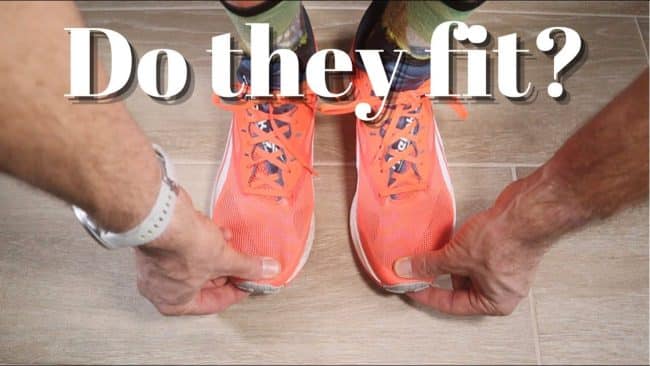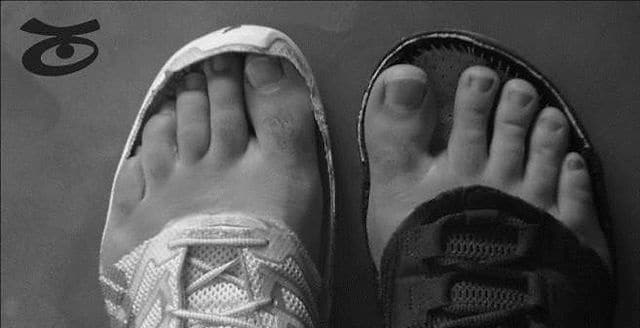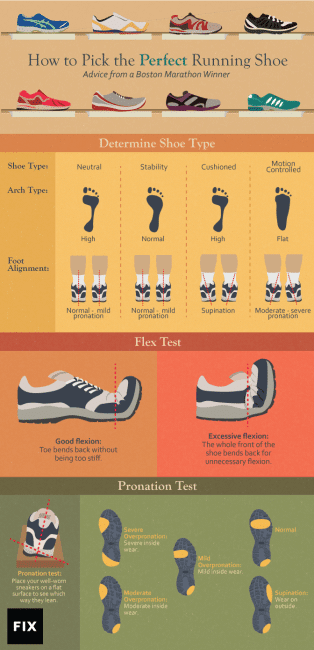Have you ever wondered if your running shoes fit properly? We all know that finding the right pair of shoes for our runs is crucial for preventing injuries and maximizing our performance. But how can we tell if our shoes fit us just right? In this article, we’ll explore some key indicators that can help you determine whether your running shoes are a perfect fit, allowing you to enjoy your runs to the fullest. So lace up your shoes and let’s dive into the world of proper shoe fitting!
Review contents
Importance of Properly Fitted Running Shoes
When it comes to running, it is crucial to have properly fitted shoes. The right pair of running shoes can have a significant impact on our performance, reduce the risk of injuries, and enhance overall comfort. Investing time and effort in finding the perfect fit is well worth it in the long run.
Impact on Performance
Having well-fitted running shoes can greatly improve our performance. When our feet are properly supported and aligned, we are able to maximize our speed and efficiency while minimizing the energy expended. The right fit can provide the necessary stability and balance, allowing us to maintain a proper running form and stride. This can lead to better times, increased endurance, and an overall more enjoyable running experience.
Reduction of Injuries
One of the most important reasons for wearing properly fitted running shoes is to reduce the risk of injuries. Ill-fitting shoes can result in a wide range of issues, such as blisters, calluses, bunions, and even more serious conditions like stress fractures or plantar fasciitis. By wearing shoes that match our foot type and provide adequate support, we can prevent these painful and often debilitating injuries, allowing us to continue running without interruption.
Enhanced Comfort
Comfort is key when it comes to running shoes. We spend a significant amount of time on our feet while running, and wearing shoes that are comfortable can make a world of difference. It is important to find a pair that feels snug and supportive without being too tight or restrictive. A well-fitted shoe will provide cushioning and shock absorption, reducing the impact on our joints and muscles. This can help prevent fatigue and discomfort during long runs, allowing us to reach our full potential without unnecessary pain or discomfort.
Understanding Foot Type
Before diving into the process of finding the perfect fit, it is essential to understand our foot type. Our pronation, which is the natural way our foot rolls inward during walking or running, plays a significant role in determining the type of shoe we need. There are three main types of pronation: overpronation, supination, and neutral pronation.
Pronation
Overpronation occurs when the foot rolls excessively inward, causing the arch to flatten. This can put strain on the muscles and ligaments, leading to various issues. Individuals with overpronation should look for shoes that provide stability and motion control to help correct the excessive inward rolling.
Supination
Supination, also known as underpronation, happens when the foot doesn’t roll inward enough during the gait. This places additional stress on the outer edge of the foot, leading to potential problems. People with supination should opt for shoes with extra cushioning and flexibility to absorb shock and support the foot during the running motion.
Neutral Pronation
Neutral pronation is considered the ideal foot type, where the foot rolls inward slightly and evenly distributes the weight. Runners with neutral pronation have a wide range of shoe options, but it is still important to find a shoe that offers adequate support and cushioning based on individual preferences and running style.
This image is property of i.ytimg.com.
Measuring Foot Size
To find the perfect fit, accurately measuring our foot size is essential. This can be done using various methods, such as the Brannock Device, foot tracing, or using shoe sizing charts.
Brannock Device
The Brannock Device is a measuring tool commonly found in shoe stores. It measures both the length and width of the foot, ensuring a more accurate fit. By standing on the device with our heel against the back and our weight evenly distributed, we can determine both measurements and compare them to the shoe sizing chart provided by the manufacturer.
Foot Tracing
Another method is foot tracing, which involves placing our foot on a piece of paper and tracing its outline. This can be done by applying pressure evenly and using a pen or pencil to trace around the foot. Once the tracing is complete, we can measure the length and width of the outline to find the appropriate shoe size.
Shoe Sizing Charts
Most shoe manufacturers provide sizing charts that correlate foot measurements to the corresponding shoe size. These charts can be found online or in-store and serve as a guideline for determining our shoe size. It is important to note that different brands may have slight variations in sizing, so it is always beneficial to refer to the specific manufacturer’s sizing chart.
Checking Length and Width
Once we have determined our foot size, it is crucial to check the length and width of the shoes we are considering. Ensuring proper toe space, heel fit, and limited side-to-side movement are all key factors in finding the right fit.
Toe Space
Having adequate toe space is essential to prevent discomfort and allow for natural foot movement. When trying on running shoes, we should ensure that there is approximately a half-inch of space between our longest toe (usually the big toe) and the front of the shoe. This extra room will prevent our toes from hitting against the shoe and help us avoid common issues such as blisters or blackened toenails.
Heel Fit
A secure and snug heel fit is crucial for stability and preventing slippage. When trying on running shoes, we should pay close attention to how our heel feels. It should fit comfortably, with little to no movement when walking or running. A loose heel can cause friction and blistering, while a tight fit can lead to discomfort or even potential injuries.
Side-to-Side Movement
Lastly, excessive side-to-side movement within the shoe can disrupt our running form and lead to instability. After lacing up the shoes, we should take a few steps or perform a light jog to assess the amount of side-to-side movement. If the shoe feels too loose or allows for significant shifting, it may not provide the necessary support and stability needed for our running activities.
This image is property of i.ytimg.com.
Assessing Arch Support
When it comes to finding the right running shoe, considering our arch support is crucial. Different arch types require different levels of support and cushioning to prevent discomfort and potential injuries.
Flat Feet
Individuals with flat feet, or low arches, should look for running shoes that provide ample support and stability. These shoes typically have strong arch support, firm midsoles, and motion control features. The aim is to help distribute weight evenly, prevent overpronation, and reduce strain on the feet and joints.
High Arches
For runners with high arches, cushioning is crucial to absorb shock and provide flexibility. Running shoes with extra cushioning, such as those with a cushioned midsole or a gel insert, can help support the foot, provide comfort, and prevent potential injuries by reducing the impact on the arches.
Medium Arches
Individuals with medium arches, which fall between flat feet and high arches, have a wider range of options when it comes to running shoes. It is important to find a shoe that offers a balance of support and cushioning to ensure proper alignment and comfort during runs. It may be beneficial to try different styles and brands to find the perfect fit for individual foot characteristics.
Examining the Flexibility
The flexibility of running shoes plays a significant role in how comfortable and supportive they are during running. Different types of flexibility tests can help us determine whether a shoe is the right fit for us.
Bending Test
One common test is the bending test. By holding the shoe at both ends and applying pressure, we can assess how much the shoe bends. The ideal running shoe should provide flexibility near the toe area to allow for natural foot movement. However, it should be more rigid along the midfoot, providing support and stability.
Twist Test
The twist test involves holding the shoe at the front and back and twisting it in opposite directions. A well-fitted running shoe should have some resistance to twisting, indicating that it offers the necessary support and structure. If the shoe twists too easily, it may lack stability and potentially lead to foot and ankle issues.
Toe Test
The toe test involves pressing down with our fingers at the toe area of the shoe. The shoe should have some give, providing enough flexibility to allow our toes to push off during the running motion. If the shoe feels too stiff or rigid, it may restrict natural foot movement and hinder our performance.
This image is property of static.wixstatic.com.
Considerations for Toe Box
The toe box, or the front part of the shoe where the toes sit, is an important area to consider when fitting running shoes. It is essential to ensure there is enough room for toe movement, to avoid pressure points and potential discomfort.
Room for Toe Movement
When standing or walking, our feet naturally expand, and our toes splay out slightly. It is important to find a running shoe that allows enough room for this expansion. A constrictive toe box can lead to discomfort, numbness, or even the development of bunions. Ideally, we should be able to wiggle our toes freely without feeling cramped or restricted.
Avoiding Pressure Points
A proper toe box should not place pressure on any specific toes or areas of the foot. When trying on running shoes, we should carefully assess if there are any points of discomfort or areas where the shoe may be rubbing against the foot. It is important to remember that shoes may feel slightly different during a run, so it is always beneficial to take them for a short jog to ensure optimal comfort.
Proper Fit with Socks
When trying on running shoes, it is essential to wear the same type of socks that we plan to use during our runs. Different thicknesses and materials can slightly alter the fit and feel of the shoe. By wearing our preferred running socks, we can ensure the shoe fits properly, without any extra tightness or excess room caused by mismatched sock thickness.
Evaluating Heel Counter
The heel counter, which is the part of the shoe that wraps around the heel, is crucial for stability and preventing slippage. When evaluating the heel counter, we should consider factors such as heel stability, secure fit, and the absence of slippage.
Heel Stability
A stable heel counter helps keep our foot aligned and prevents excessive inward or outward movement during runs. When trying on running shoes, we should ensure that the heel counter cups the back of our heel snugly without causing discomfort. This will provide the necessary stability and prevent potential injuries caused by unstable foot movement.
Secure Fit
A secure fit in the heel area is essential to prevent slippage and maintain control during runs. When trying on running shoes, we should lace them up properly and assess whether our heel feels locked in place. The shoe should hold our foot securely, allowing for minimal movement within the shoe.
No Slippage
Slippage in the heel area can be a major nuisance and can lead to discomfort, blisters, or even injuries. When trying on running shoes, it is important to walk or jog around the store to determine whether there is any slippage at the back of the shoe. If there is excessive movement or if the heel slips out with each step, it is an indication that the shoe may not provide the necessary support and stability.
This image is property of www.therightfits.com.
Examining Cushioning and Shock Absorption
Cushioning and shock absorption are crucial elements of well-fitted running shoes. The right amount of cushioning can protect our feet and joints from the impact of each step, while also providing the necessary comfort for long-distance runs.
Impact Protection
Running puts a significant amount of stress on our feet and joints due to the repetitive impact with each stride. Properly fitted running shoes should have adequate cushioning in the midsole and heel area to provide impact protection. This cushioning absorbs shock, preventing potential injuries and reducing the risk of joint pain or discomfort.
Underfoot Comfort
Alongside impact protection, underfoot comfort is essential for a pleasant running experience. The cushioning within a properly fitted running shoe should provide support and alleviate pressure points, reducing the likelihood of fatigue or discomfort during extended periods of running. A comfortable underfoot experience allows us to focus on our performance and enjoy the run without unnecessary distractions.
Appropriate Level of Support
While cushioning is important, it is also crucial to find a shoe that offers the appropriate level of support. Some runners may prefer a shoe with more stability, especially if they have specific foot conditions or overpronation. Others may benefit from a more neutral shoe with minimal stability features. The level of support required largely depends on individual foot characteristics and running style. It is always recommended to consult with a professional or knowledgeable staff at a specialty running store to find the appropriate level of support for our specific needs.
Considering the Tread and Outsole
The tread and outsole of running shoes play a critical role in ensuring traction, durability, and suitability for various terrains. Evaluating these factors is essential to find a shoe that meets our specific running requirements.
Grip and Traction
The tread pattern and outsole material are key factors in providing grip and traction. Depending on the running surface, it is important to choose a shoe with a suitable tread pattern that offers optimal traction. For road running, shoes with a more uniform and less aggressive tread pattern are generally preferred. On the other hand, trail running shoes often have deeper and more aggressive lugs to provide better grip on uneven and slippery surfaces. Analyzing the type of running we plan to do will help us select a shoe that offers the necessary traction for our specific needs.
Durability
Running shoes are subjected to a significant amount of wear and tear, especially for regular runners. Ensuring the durability of the shoe is important to avoid premature wear and potential discomfort. When examining the tread and outsole, we should also consider the overall construction of the shoe. Reinforced areas, quality materials, and good workmanship can all contribute to a more durable running shoe that will stand up to the demands of our running routine.
Suitability for Terrain
Different terrains require different shoe characteristics to ensure optimal performance and safety. Road running shoes are typically designed to provide a balance of cushioning, support, and responsiveness on smooth surfaces. Trail running shoes, on the other hand, are specially designed to offer better traction, durability, and protection on rough and uneven terrains. By selecting a shoe that matches the terrain we plan to run on, we can maximize our performance and reduce the risk of injuries.
In conclusion, finding properly fitted running shoes is critical for our performance, injury prevention, and overall comfort. Understanding our foot type, measuring our foot size accurately, and evaluating various aspects such as length and width, arch support, flexibility, toe box, heel counter, cushioning, and tread can help ensure we find the perfect fit. Putting in the time and effort to find the right shoes will greatly enhance our running experience, allowing us to reach our full potential while minimizing the risk of discomfort or injuries. So lace up those shoes and hit the road with confidence, knowing that you have taken the necessary steps to find shoes that truly fit your needs!
This image is property of www.hprc-online.org.













